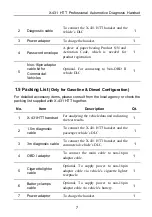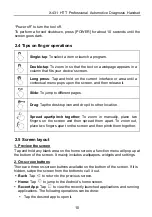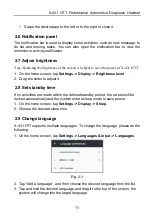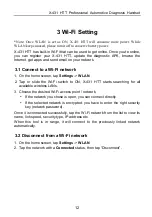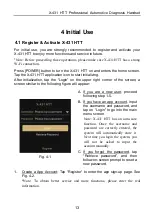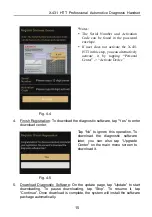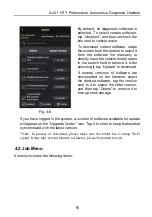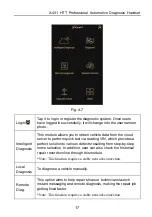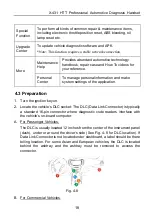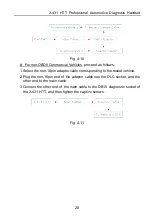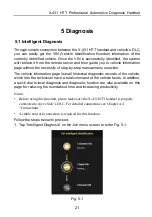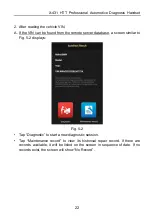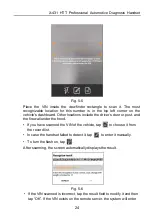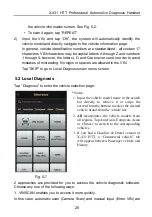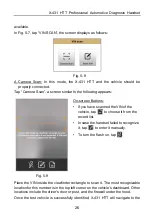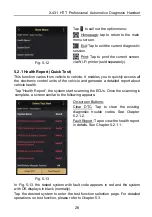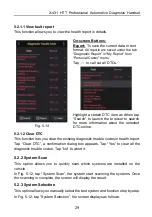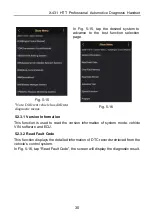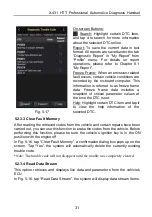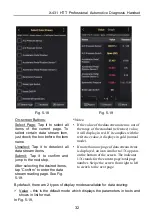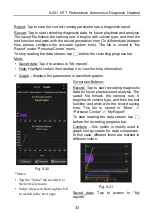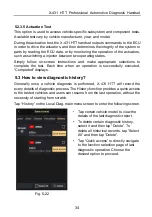
X-431 HTT Professional Automotive Diagnosis Handset
19
The DLC is usually located in driver’s cab.
If the DLC cannot be found, refer to the vehicle’s service manual for the
location.
4.4 Connections
The method used to connect the main cable to a vehicle’s DLC depends on the
vehicle’s configuration as follows:
A. OBD II Vehicle Connection: Plug one end of the main cable into the vehicle’s
DLC, and the other end into the DB15 diagnostic socket of the X-431 HTT,
and then tighten the captive screws.
B. Non-OBD II Vehicle Connection: For vehicles with non-OBD II diagnostic
socket, a non-16pin adaptor cable is required.
a). For non-OBDII Passenger Vehicles, proceed as follows:
1. Select the non-16pin adaptor cable corresponding to the tested vehicle.
2. Plug one end of the main cable into the DB15 diagnostic socket of the
X-431 HTT, and the other end to into the OBD I adaptor.
3. Plug the non-16pin end of the adaptor cable into the DLC socket, and the
other end to the OBD I adaptor, and then tighten the captive screws.
4. To supply power to OBD I adaptor from:
A. Cigarette Lighter Cable: Connect one end of the cigarette lighter cable to
vehicle’s cigarette lighter receptacle, and the other end to the power jack of
OBD I adaptor.
Fig. 4-9
B. Battery Clamps Cable: Connect one end of the battery clamps cable to
vehicle’s battery, and the other end to the power jack of OBD I adaptor.
Summary of Contents for X-431 HTT
Page 8: ......



